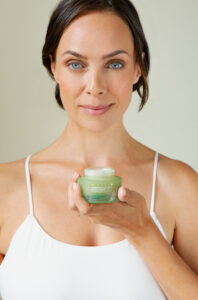Hourglass Syndrome – The dangers of “sucking in” this Christmas

By Pelvic Floor Expert Stephanie Taylor at Kegel8
We all want to look our best at Christmas, especially after last year when party plans were cancelled.
But at this time of year, many of us will suffer with body confidence issues and
without even realising will find ourselves “sucking in” our stomachs.
You might do this because it’s a habit caused by insecurity, or because you think it’s good for your abs. The truth is, sucking in for long periods can lead to a whole host of health problems.
What is Hourglass Syndrome?
The habit of sucking in your stomach is likely to come from feeling the need to look smaller and have a flat stomach, thanks to decades of fitness trainers and celebrities emphasising the benefits of tight abdominal muscles.
Also known as “stomach gripping”, sucking in involves pulling your belly button inwards and upwards by contracting the top abdominals. This may seem completely normal given how many women do it, but if you do this for too long it can have both physical and mental impacts.
What problems can it cause?
There’s a time and place for engaging your abs, but if not done correctly or in the right environment, it can lead to a whole host of problems.
Sucking in doesn’t just affect the stomach muscles. It can have knock-on effects on your pelvic floor muscles – the group of muscles around your bladder, bottom, and vagina or penis. If you constrict your abdominal muscles for too long, this forces pressure on the pelvic floor leading to potential bladder incontinence and pelvic organ prolapse requiring surgery to put right.
It can also impact your lungs, by pushing everything in your middle region upwards into an unnatural position. This makes taking long, deep breaths more difficult and restricts the amount of oxygen in your blood.
You could end up with uncomfortable back, neck, shoulder, and hip pain too. Engaging your abs for prolonged periods while walking or standing can alter your body’s mechanics, putting extra load on joints and muscles to make up for the lack of support from the constricted diaphragm. When the diaphragm doesn’t descend downwards (as it should) into your belly—breathing into your lower torso—then it puts the neck under strain as it tries to compensate for the lack of breath. This plays a critical role in neck and shoulder pain.
Your abs may also get so used to being engaged that they become less responsive to it, limiting your body’s ability to see improvements from exercises targeting that muscle group.
From a mental wellbeing perspective, the practice of sucking in can cause you to have body confidence issues when you let go – meaning you’ll keep doing it and a vicious cycle is created. Getting compliments about how flat your stomach is can help to feed this habit, making it difficult to break.
Is Hourglass Syndrome permanent?
Luckily, though, Hourglass Syndrome isn’t permanent – but it can cause complications and dysfunction that can affect you in the long term if not treated correctly.
Just as it takes time for sucking in to become second nature, it takes time to unlearn it.
The first step to kicking the habit is to be aware that you’re doing it. Be conscious of what you’re doing to your body and when.
You may find you have to retrain your muscles through belly breath work and abdominal massage. Take relaxed breaths in that fill your stomach instead of filling only your chest.
Research online resources about how to breath better and relax different muscle groups while sitting or standing. If you find you’re struggling to stop sucking in and have complications like pelvic floor dysfunction, shortness of breath, or pain in your joints, it’s best to contact a health professional who can help you.
Lastly, if you have body confidence issues that are made worse by having to dress up and socialise over the Christmas period, only every wear something that you feel good in – not what you think is on-trend. Dressing for your body shape (rather than trying to change it) can help to knock these anxieties on the head.





